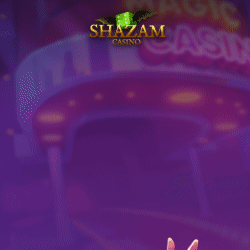
Oxford-powered Lexico defines the word tell as “an unconscious action that is thought to betray an attempted deception.” That definition is especially meant for poker, but it really applies to any card game that features hole cards, including blackjack.
In blackjack context, a tell is any little clue a dealer might give away about their hole card due to certain inconsistencies in their usual behavior at the table.
Since players can adjust their bets and determine how to act based on any knowledge they might have about the dealer’s hole card, tells can be extremely valuable. However, players should not expect to find dealer tells on every single hand they play. Still, they can spot enough to improve their edge over the casino.
Best Online Blackjack Bonuses
Learning to Spot Blackjack Dealer Tells
Just as with card counting, shuffle tracking, or hole carding, learning to spot dealer tells is a skill that is not that easy to learn and perfect.
And yet again, it should be noted that tells are based on a person’s mannerisms, body language, and involuntary facial expressions, and these can all be very subjective, so players need to be very careful when making decisions based on a dealer’s supposed tells.
Still, if a player wants to learn how to spot dealer tells, we have a few tips and words of advice that can really help in that endeavor.
The first thing the player needs to know is that they need to invest a lot of time in order to master the skill of successfully spotting dealer tells. And mastering that skill also requires a lot of practice. Only this way the player will be able to gain enough experience on basic dealer behavior, and then be able to notice a dealer’s mannerisms and behavioral patterns and also spot inconsistencies in those patterns.
These inconsistencies are exactly what they need as they generally indicate whether a dealer’s hole card is pat or stiff.
A good tip for players is to develop their own systematic routine of evaluating elements of their dealer’s behavior. For instance, a player who has just begun observing dealers in hope to spot a tell or two could carry out a sequence of various observations on every hand they play.
If the player fails to develop a methodical approach, they are likely to become fixated on just one or two aspects of their dealer’s behavior and overlook other possibilities and opportunities that may emerge over the course of the game.
Other Useful Tips
The player should make sure to practice until they can execute their routine quickly and almost automatically.
It is also a good idea for the novice tell player to learn to observe the dealer’s attitude toward other players at the blackjack table. This way they will be able to gain knowledge of what a particular tell is based on. In addition, the player will know if what they suspect could be a tell they can use is really a tell and not a dealer’s subtle attempt to help a particular player win.
Another thing a tell player should take into account is that they should focus on playing at one or two casinos and observe their dealers’ behavior. It is imperative to abstain from using card counting or other advantage play techniques since if an advantage player gets caught, they will likely be banned from the casino and all their efforts to spot tells would go to waste.
Risk of Ruin and Standard Deviation
Building up and Securing the Bankroll
Making a Proper Selection of a Game
Appropriate Games
Even when a player is certain they have developed good enough skills to spot dealer tells, they should remember that these skills cannot be applied all the time. They work in some cases and don’t work in others.
This is because human psychology can’t always be predicted. And human psychology is exactly what dealer tells are based on.
What’s more, inexperienced dealers are more prone to giving away clues about their hole cards than dealers with tons of experience on the casino floor. In other words, as a novice dealer gains experience, they will likely also learn how not to make mistakes and involuntarily provide information about their hole card.
Popular Blackjack Dealer Tells
There are different types of dealer tells from the placement of the dealer’s hand to the time the dealer spends peeking at their hole cards. And the latter is probably the most common dealer tell.
In most cases dealers don’t look at their hole cards until there is a need for it. Players thus can’t get much information about the hole cards since the dealer themselves don’t know what they are holding.
However, at some point during the blackjack round, the dealer will have to peek at their hole card and this is when a tell player should observe carefully. Since the dealer is reading the card at a certain, most often very uncomfortable, angle, it is difficult to read some of the cards.
Depending on how quickly the dealer manages to read their card, the tell player can guess the value of the hole card and size their bets accordingly.
Here is a summary of the difficulty to read a hole card:
- Tens are probably the easiest to read because they are the only two-figure cards in the deck;
- Face cards are, too, easy to read because they are illustrated and their value in blackjack is all the same;
- Cards like 2s and 5s, 3s and 8s, and Aces and 4s are more difficult to read because they can look extremely similar when seen from a certain angle, which means that the dealer needs a little more time to read them.
Sometimes the dealer could also peek at their hole card several times, which could mean that they might be having a high card.
Some say that the dealer cards’ placement could also be a tell. If the dealer places their cards slightly to their right after checking their hole card, this could be a subtle sign that they have a low card and expect to hit more cards from the shoe.
However, if they place their cards more to the center of the table, they could be having a pat hand and will not need the extra room required when they take a hit from the shoe.
Others say that this is not a proper tell as many dealers consistently place their newly drawn cards right in front of them. And even if they need extra room, they can easily move their cards to the side.
Once again, many tell players observe the dealer’s mannerisms and facial expressions to hopefully gain some information about the value of the hole card.
Exploiting Dealer Tells in Blackjack
If a player can read a dealer’s tells well, they can gain information on whether the dealer’s hole card is high or low and adjust the size of their bets accordingly. If the player successfully spots a tell, that knowledge can help them predict a bust or a pat hand and make their decisions based on that knowledge.
At most casinos, the dealer does not check their hole card until after all players at the table have completed their hands. A tale in a situation like this is pretty much useless. However, if the dealer shows an Ace or a 10, which happens about 38% of the time, they have to check their hole card for a blackjack before play continues.
In these cases, the player should watch carefully whether the dealer’s expression will change, where their eyes would rest, where their hands would be placed, and for unusual movements.
If a player is holding a hand worth, let’s say, 15 against a dealer’s 10, according to basic blackjack strategy, the player should surrender. However, if the player has spotted a dealer tell and knows that the dealer has a low card, then they can decide to hold still and wait to collect their win when the dealer busts.
Tell players should remember that spotting dealer tells are not the safest strategy and the situations they can rely on such tells could be limited. A safer way to reap benefits from dealer tells is by using them in addition to another strategy (basic strategy, for example) and not as a substitute for that other strategy.













